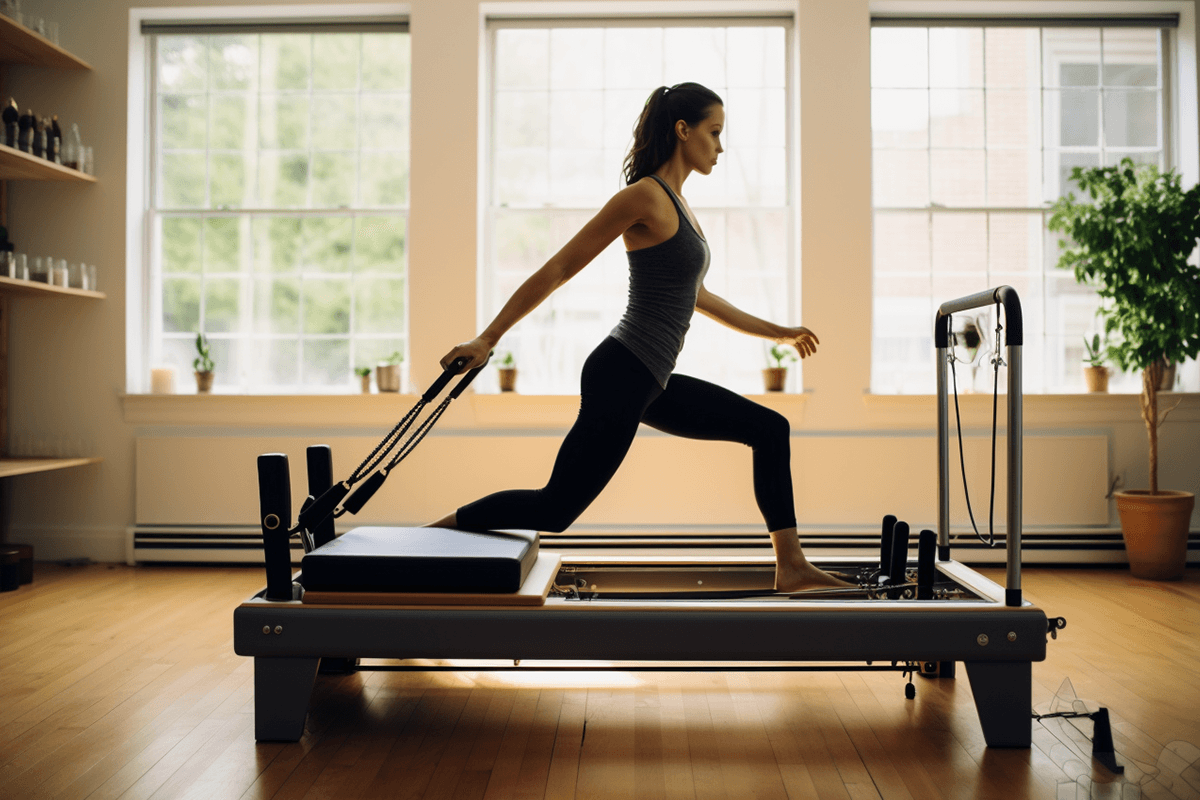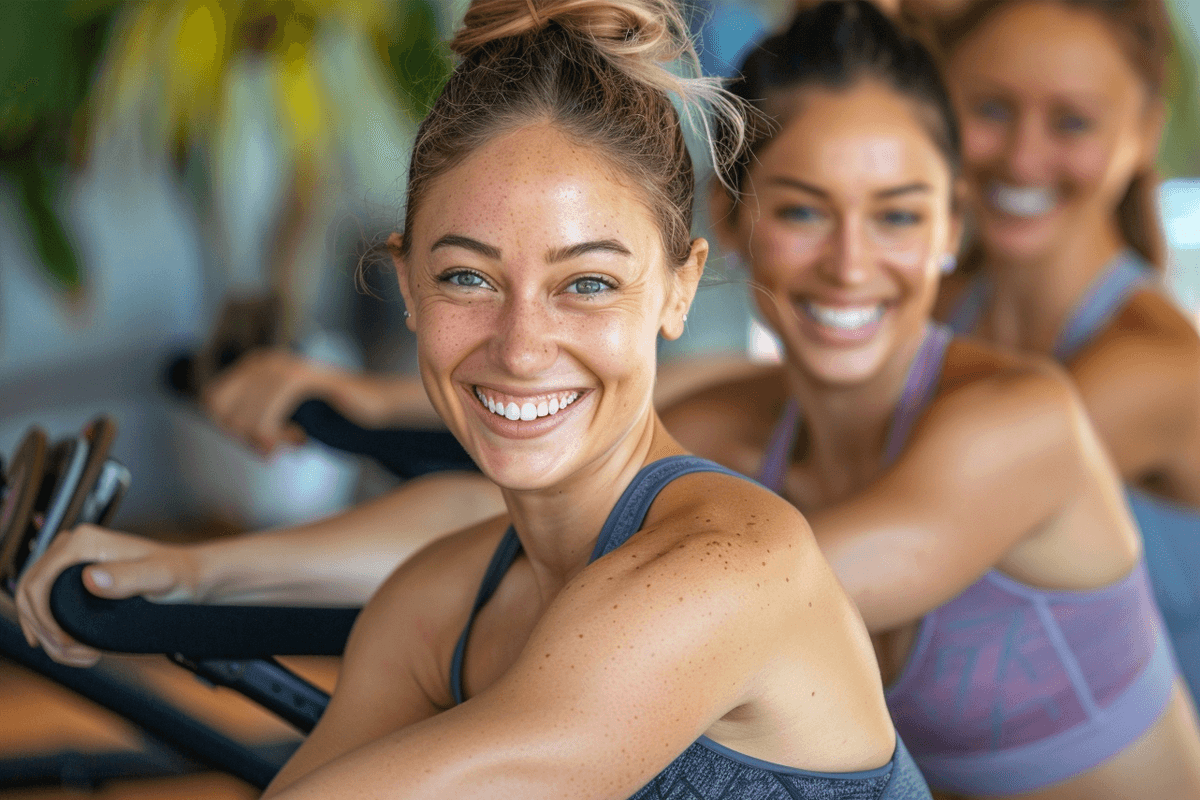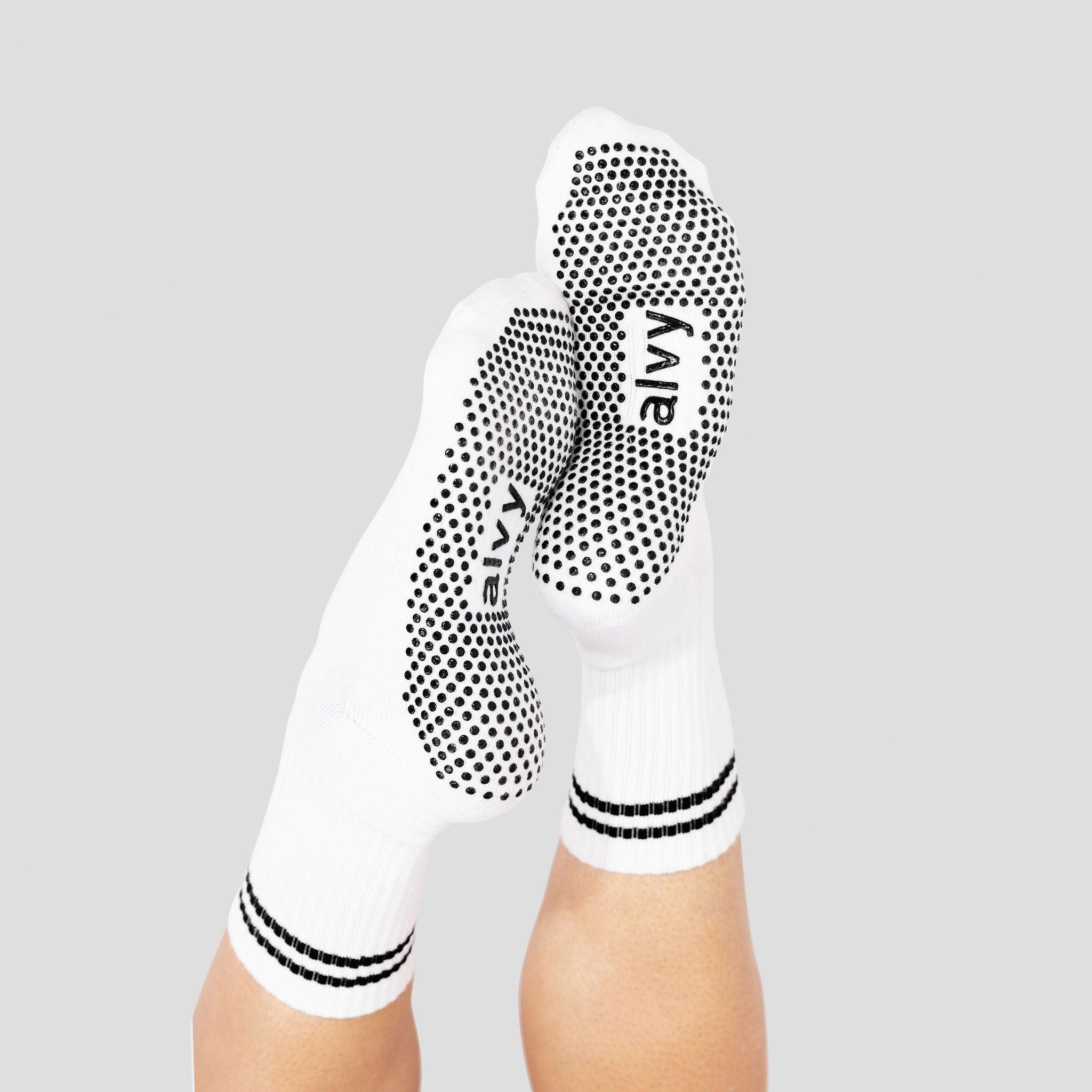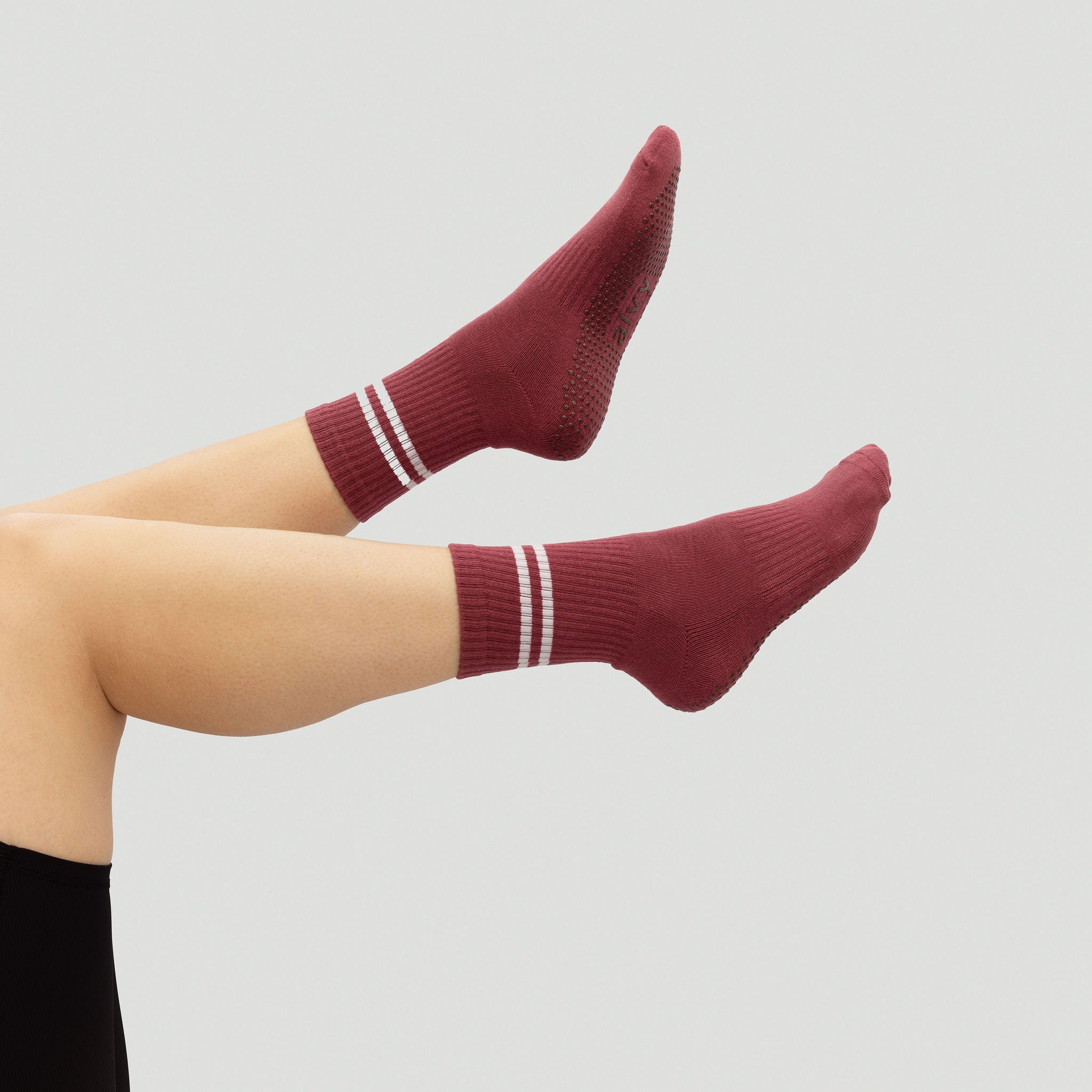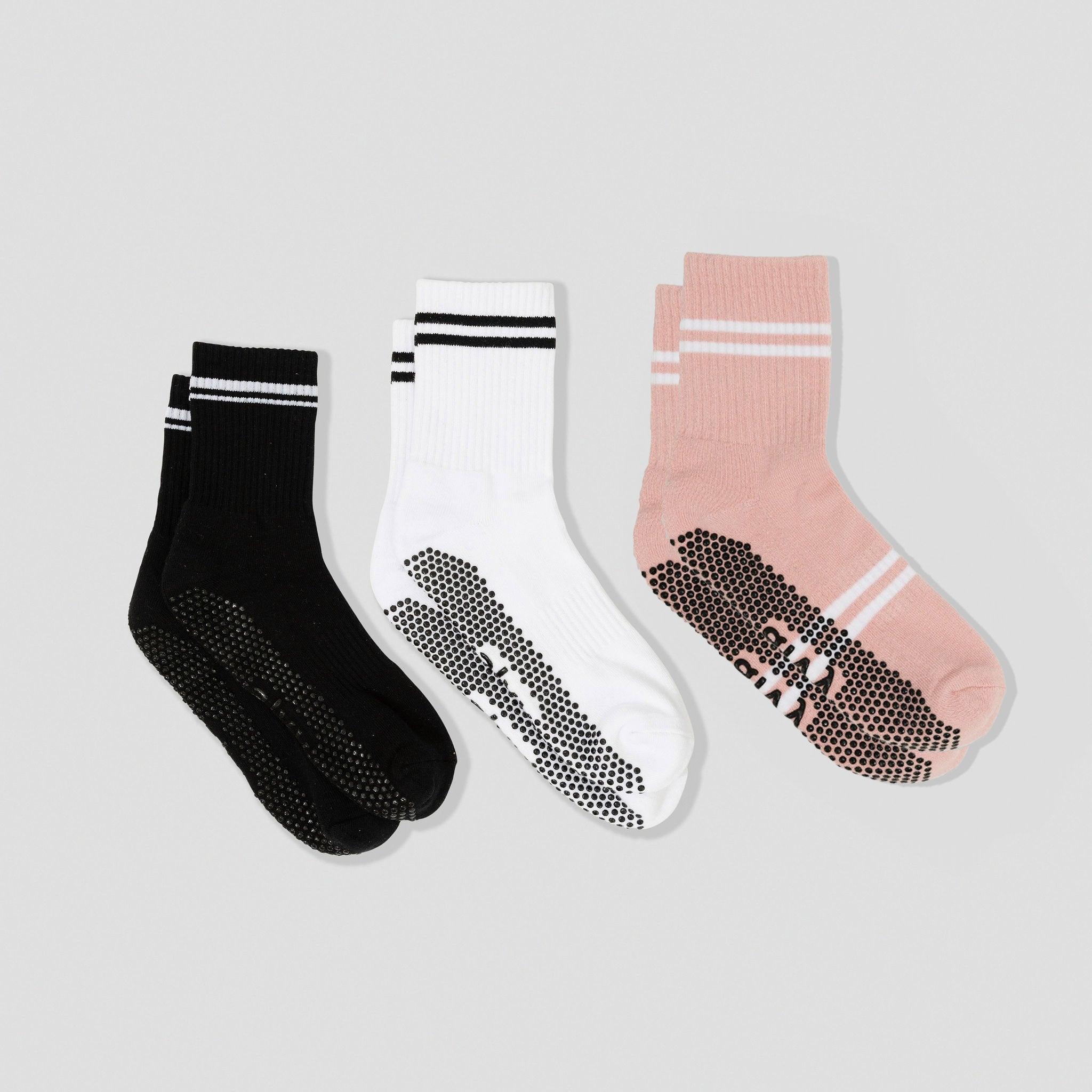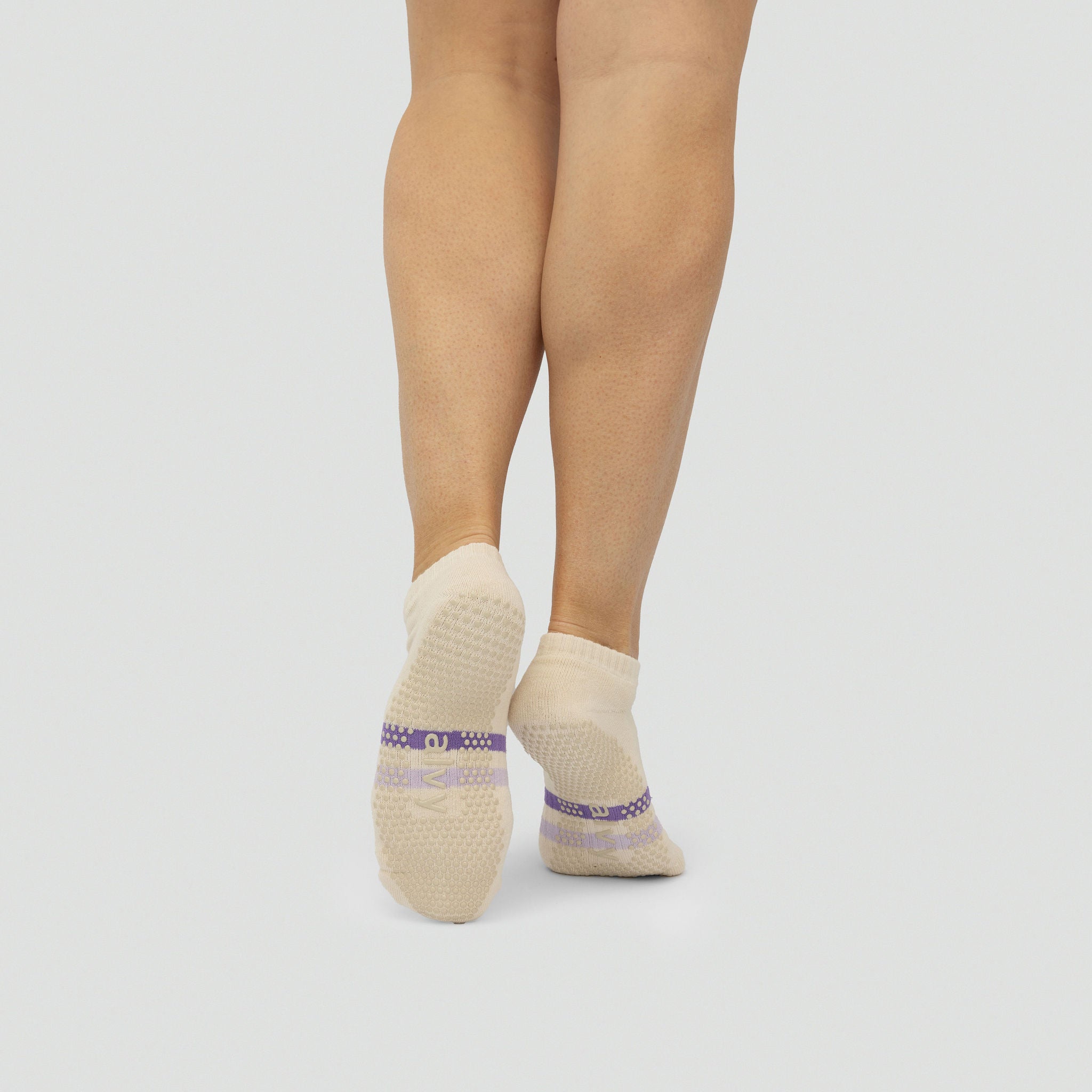Understanding the key differences between mat and reformer Pilates is essential in determining the right fit for your fitness routine. Mat exercises are easier to integrate into your home exercise regimen, while the reformer offers versatility that can challenge and improve your strength, coordination, and overall physical conditioning in distinct ways. Whether you're looking to hone in on technique and form or push your boundaries, your decision will shape your Pilates experience.
Defining Mat Pilates, Key Exercises and BENEFITS
Mat Pilates emphasises on the balanced development of the body through core strength, flexibility, and awareness. The goal with mat work is to support efficient, graceful movement. The main exercises you can expect from Pilates mat classes (or via the Pilates apps) include:
- The Hundred: This is a breathing exercise designed to increase circulation, strengthen abdominal muscles, and build stamina.
- The Roll-Up: A slow, precise move that stretches the spine and the back of the body and strengthens the abdominals.
- Leg Circles: These help improve hip flexibility while stabilising the torso and strengthening the pelvic muscles.
- The Plank: An excellent way to engage the full core, including the shoulders, chest, and back.
So what are the benefits of mat Pilates?
It offers a multitude of advantages that enhance both physical and mental well-being. Firstly, it strengthens core muscles, which serve as the cornerstone for all movement, providing stability and support. Through regular practice, mat Pilates fosters increased flexibility, leading to a more limber body and expanded range of motion. Moreover, it cultivates improved posture by heightening awareness of body alignment, resulting in a more upright and balanced stance.
You will also find that mat Pilates emphasizes the mind-body connection through focused breathwork, facilitating mental clarity and stress reduction. By integrating these elements, mat Pilates not only enhances physical fitness but also promotes holistic wellness.
Now, lets take a look at reformer Pilates.
Basics of Reformer Pilates and Key Exercises
Reformer Pilates traditionally incorporates a machine known as the Reformer. This apparatus challenges our body through resistance with its system of springs, ropes, and a sliding carriage.
For beginners that start off with reformer classes, the most fundamental exercise you will encounter is the footwork series which builds a foundation, focusing on leg alignment and strengthening. It's conducted lying down, pressing the feet against the carriage which moves in and out. Here's a quick summary of the typical reformer exercises to expect:
| Exercise | Focus Area | Description |
|---|---|---|
| Footwork | Legs, Core | Pressing movement with feet against carriage |
| The Hundred | Core, Breath Control | Pumping arms up and down while maintaining a curled position. |
| Leg Circles | Hip Mobility, Core | Legs in straps, circling smoothly. |
Another cornerstone is The Hundred, aimed at enhancing core strength and coordination. It is performed vigorously pumping your arms up and down while sustaining a curled position, challenging your endurance.
Another popular routine are leg circles which involve placing your legs in straps and rotating them in controlled circles, honing our hip mobility and core stability.
The key to reformer is to align every movement with proper breathing to maximise the effectiveness. It's crucial to maintain precision, form, and control rather than speed during these exercises.
Similarities and Differences With Core Principles and Techniques
Both Reformer and Mat Pilates build from Joseph Pilates’ original teachings, emphasising controlled movements to improve strength, flexibility, and body awareness.
Reformer Pilates Fundamentals
With Reformer Pilates, you utilise a machine equipped with springs, a sliding carriage, ropes, and pulleys. The Reformer adds resistance to Pilates exercises, which can enhance your strength training.
- Controlled Resistance: The Reformer's springs allow you to adjust resistance levels, tailoring the intensity to your own strength and skill level.
- Range of Motion: The machine facilitates a greater range of motion compared to Mat Pilates, potentially accelerating improvements in flexibility and joint mobility.
Mat Pilates Fundamentals
In contrast, Mat Pilates involves exercises performed on the ground using a mat, relying primarily on your body weight for resistance.
- Body Weight and Gravity: Your exercises on the mat use gravity as resistance, which can be more challenging for certain muscle groups.
- Accessibility: Mat Pilates is accessible as it requires no specialised equipment, just space and a mat, making it easier to practice anywhere.
The core principles of Pilates such as concentration, control, centre, flow, precision, and breath are deeply ingrained in both styles, dictating the technique and approach to each exercise regardless of the apparatus used.
Deep Dive Into Their Physical and Mental Benefits
In choosing between Reformer Pilates and Mat Pilates, consider how each method aligns with your fitness goals and personal preferences.
Reformer Pilates Advantages
Reformer Pilates involves a machine that provides resistance via springs, which can lead to increased muscle strength and tone. Your range of motion may be enhanced due to the machine's assistance, allowing for a more varied workout:
- Dynamic Resistance: The adjustable springs allow you to modify the difficulty level, catering to beginners and advanced users alike.
- Support for Rehabilitation: The Reformer offers support that can aid in injury rehabilitation, ensuring that you can exercise safely.
Mat Pilates Advantages
Mat Pilates requires no more than a mat for its body-weight exercises, focusing on core strength and flexibility. Its accessibility and emphasis on the precision of movement make it especially convenient:
- Core Stability: By using your body weight as resistance, Mat Pilates strengthens your deep core muscles, which can improve posture.
- Mind-Body Connection: The methodical, focused movements encourage mindfulness and stress reduction.
What Equipment and Accessories Do They Use?
Choosing between Reformer and Mat largely depends on the Pilates equipment you will need for your home or during your sessions.
Reformer Machine
The Reformer is a specialised piece of equipment that consists of a carriage which moves back and forth along tracks within a frame. The resistance is provided by a set of springs that can be adjusted to vary the level of difficulty. Your Reformer Pilates workout may also utilise the following accessories:
- Pulleys and Straps: For arm and leg work to refine your coordination and strength.
- Footbar: Adjustable for different exercises and user heights.
- Jumpboard: An attachment for the end of the Reformer to allow for horizontal jumping exercises.
If you want to buy a reformer for the home, here's a list of the best reformers in Australia rated by our team.
Mat Pilates Equipment
Mat Pilates, in contrast, requires minimal equipment. Essential items you might use include:
- Pilates Mat: Thicker than a standard yoga mat to cushion the spine during rolling exercises.
- Pilates Grip Socks: For better traction and support, non-slip grip socks can prove to be a useful companion.
-
Small Props: Including, but not limited to:
- Magic Circle: A ring used to add resistance to exercises.
- Resistance Bands: To enhance the work on your muscles.
- Pilates Ball: For stability exercises and to promote proper form.
Which Is Easier To Start With?
When you begin with mat Pilates, you'll be using your own body weight as resistance. This base form of Pilates introduces you to the fundamental movements and principles at a pace that can be easier to grasp because it involves fewer complex machines and settings.
On the other hand, starting with Pilates reformer may present a steeper learning curve due to the machinery involved. The reformer adds an array of exercises that can be adjusted with springs for resistance, which will require guidance to use effectively and safely.
How Do The Exercises Compare Between The Two?
In Reformer Pilates, you use a machine equipped with springs, ropes, and a sliding carriage that provides resistance. This resistance is adjustable, allowing for a broad range of exercises targeting various muscle groups. You can perform movements in lying, seated, and standing positions. The Reformer's versatility enables you to work on stabilising your core while challenging your range of motion.
With mat work, your exercises are performed on a mat, using your body weight as resistance. You focus on core strength, flexibility, and balance without the added tension of the Reformer. Typical Mat exercises include classics like 'The Hundred', 'Rolling Like a Ball', and 'Planks', emphasising control and precision.
Does Pilates Reformer Or Mat Pilates Give Better Results?
Whether Reformer or Mat Pilates gives better results depends on your personal fitness goals. If you're seeking to add resistance to your workouts and enjoy varied ranges of motion, the Reformer may be beneficial. However, for core strengthening and accessibility, Mat Pilates might be preferred. Both offer excellent workouts that can improve posture, muscle tone, and flexibility.
Health and Fitness Outcomes
In evaluating Pilates and Reformer Pilates, both modalities offer substantial health and fitness benefits, particularly in core strength and stability, as well as flexibility and posture. These outcomes are foundational to our overall physical well-being.
CORE STRENGTH AND STABILITY
Pilates is famous for its focus on the core, or the "powerhouse," as we often term it. The exercises in a classic Pilates session are specifically tailored to reinforce the muscles of the abdomen, lower back, hips, and buttocks. This leads to enhanced core strength which supports our entire body in daily activities. Reformer Pilates, with its resistance-based apparatus, further escalates this process, providing a more intense workout that can advance these strength gains even more effectively. Participants in Reformer Pilates classes often report noticeable improvements in core stability.
FLEXIBILITY AND POSTURE
Our attention to flexibility and posture is paramount. Pilates exercises encourage lengthening of the muscles and increasing range of motion, which in turn can lead to improved flexibility. Regular practice of Pilates, whether on the mat or using the Reformer, aids in correcting postural imbalances, thus enhancing our overall posture. Specifically, the use of the Reformer machine can assist in achieving deeper stretches and more precise movements, as suggested by the methodical resistance it provides. Consistent practice can make a significant difference in our flexibility and posture, contributing to a healthier alignment and muscular balance.
Which Is More Expensive?
Mat Pilates is typically the less expensive option. Since it generally requires no more than a Pilates mat and can be done at home or in a group class, the investment is relatively minimal apart from your Pilates workout clothes and the membership for classes. Your primary costs arise from class fees if you choose to participate in a studio setting.
- Home practice: Free, after mat purchase
- Group classes: Average from $20 to $50 per session
On the other hand, Reformer Pilates involves specialised equipment - the Pilates Reformer machine. The machine's complexity and the smaller class sizes, or private sessions that use them, contribute to a higher price point.
- Group classes: Average from $50 to $100 per session
- Private sessions: Significantly higher, depending on the instructor and studio
Additionally, should you opt to purchase a Reformer for personal use, your initial outlay can range from several hundred to a few thousand dollars. If you can't afford to do Pilates regularly, then mat classes online from your home is a cheaper option.
Frequently Asked Questions
In this section, you'll find answers to common questions about the unique aspects of Reformer Pilates compared to Mat Pilates, their respective benefits, and guidance on beginning your Pilates practice.
What are the key differences between Reformer Pilates and Mat Pilates?
Reformer Pilates involves a specialized machine that uses springs and pulleys to provide resistance, while Mat Pilates is performed on a mat using your body weight. The Reformer can assist with more complex movements and aid in targeting specific muscle groups.
Can Reformer Pilates contribute more effectively to weight loss compared to Mat Pilates?
While both forms can contribute to weight loss by improving muscle tone and overall fitness, Reformer Pilates typically offers a more intense workout due to the added resistance, potentially leading to a higher energy expenditure.
What are the advantages of using a Reformer machine over traditional Mat exercises in Pilates?
The Reformer machine allows for a diverse range of exercises and can be adjusted to different skill levels, providing support for beginners or added resistance for advanced practitioners. This versatility can enhance precision in movements and allow for progression in your Pilates practice.
Is it necessary to start with Mat Pilates before attempting Reformer Pilates?
It's not mandatory to start with Mat Pilates; however, it's often recommended for beginners. Mat Pilates helps you build a foundation by focusing on core strength, alignment, and breath control, which can be beneficial before using the Reformer's added complexity.


